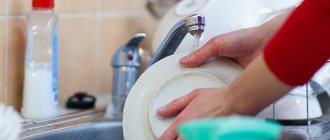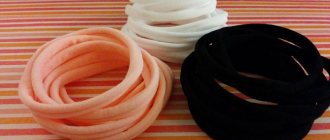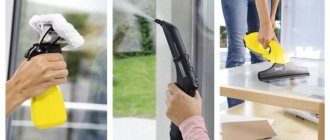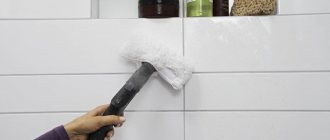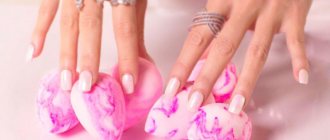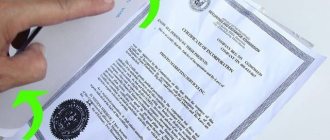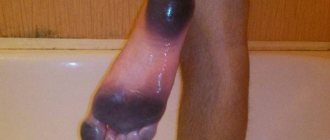The quality of makeup depends not only on cosmetics, the technique of applying it and the condition of the skin, but also on the brushes, sponges and beauty blenders that are used. It is important to know how to wash makeup brushes, because cleanliness of the tools is the key to a perfect make-up. Caring for brushes is mandatory, even if they are not used daily or are stored in separate cases.
One way to properly wash your makeup brush is using soap.
Not only professional makeup artists, but also “ordinary” users of decorative cosmetics should think about washing accessories. We will tell you more about cleaning methods below.
Paint me, artist: types of makeup brushes
Having many or few brushes is everyone’s business. There is a minimum set required for makeup, but you have the right to expand this list. There are special tools for applying foundation, powder, eye shadow, blush, lip gloss and others.
It is better to store makeup brushes in a special case.
Advice! Do not apply compact products with a natural fiber brush. They contain fatty components that are quickly absorbed into the pile. This will not only degrade the properties of the tool, but can also cause skin irritation.
Types of cosmetic tools for applying makeup - gallery
Oily foundations are best applied with a brush with artificial bristles.
The tool for applying lipstick or gloss is usually sold in a separate case
A synthetic brush with an angled cut allows you to perfectly draw the shape of your eyebrows.
For dry shadows, it is advisable to use brushes made from natural materials.
The concealer brush is made from synthetic fibers
Brush for blush, bronzers and powder has natural bristles
Brush material
Makeup tools are made from natural or synthetic fibers. For dry bulk products, natural bristle brushes are used; for liquid and cream products, synthetic bristles are used.
- Natural fibers are soft and delicate; they are good for applying loose powder, blush, and eye shadow. Liquid and cream products are absorbed well by such brushes. This makes the pile heavier and affects the quality of the makeup. It is impossible to blend foundation or concealer well with a natural brush.
- Synthetic fibers are stiffer. This is not the best option for loose products: the sensations from such use are not very pleasant. But they perfectly blend the foundation and are convenient for masking minor skin imperfections with concealer. Since the villi have a smooth structure, they do not become clogged with the product.
There are no big problems with synthetic brushes; they do not absorb fat, are easy to clean and dry quickly. Natural brushes require a special approach. Improper care can damage them hopelessly. But regardless of the material they are made of, brushes must be washed and done regularly.
How to store it correctly
The more we love brushes, the longer they last for us. After the brush is washed and dried, it must be stored somewhere until the next use.
Proper storage of brushes ensures their long-term usefulness.
When choosing a device for storing makeup tools, you should pay attention to the following aspects:
- the height of the storage system should correspond to the longest brush;
- it is necessary to take care to protect the bristles so as not to fluff them up;
- the width of the device will depend on the number of storage units;
- the device must effectively protect against dust and dirt getting inside.
The storage system is selected according to certain criteria.
The most common and practical storage devices for cosmetic equipment include:
- cases with fasteners or pockets for storage;
- sealed tube for vertical storage;
- container, suitable not only for storage, but also for transportation;
- tray with separate cells for each accessory.
There are different options for storing brushes.
Daily cleaning rules for beauty tools
Professional makeup artists wash and disinfect brushes after each client. And this is correct, because bacteria living on the skin of one person can easily be transferred with a dirty brush to the skin of another. There is no such risk at home. If the brushes are individual, you can only transfer your own bacteria to your skin. True, they have multiplied considerably. After all, if we wash ourselves every day, the situation is different with brushes.
When using makeup tools, take care of their hygiene
How often to wash brushes and sponges for powder, foundation and decorative cosmetics
Care is divided into superficial cleaning, which is recommended after each use of brushes, and deep cleaning. There is no consensus on the frequency of deep cleaning. Some sources advise washing all brushes once a week or even a month. This is acceptable as long as daily surface cleaning is performed. One caveat: brushes for liquid and cream products, and especially a brush for liquid eyeliner, should be washed every day. The fatty, moist environment of these products is a sanatorium for bacteria. One day is enough for them to multiply in incredible quantities and cause skin irritation upon repeated use. This is especially dangerous if the brush is intended for eyeliner.
Recommendations for caring for cosmetic instruments:
- Brushes and sponges for foundation, concealer and other liquid or cream products, as well as eyeliner and lip brush are recommended to be washed after each use;
- brushes for powder and blush should be washed once a week for daily use;
- Wash eyeshadow applicators once every three days;
- It is enough to wash the puff once a week.
How to clean tools after each use
Makeup remover wipes and disinfectant are used for this purpose. First, the brushes are cleaned of cosmetic residues, then disinfected, if these two functions are not combined in one product.
- Wipe the tools with a cloth until they are clean. You can use micellar water for this purpose.
- There is another interesting way - dry cleaning with any microfiber cloths. According to the manufacturer, they remove 99.9% of bacteria.
- To free your brushes from product residues, it is convenient to use special ribbed mats or mittens.
- After cleaning, treat your brushes with a disinfectant.
A special ribbed mat will help you wash your brushes.
Disinfectants and their use
- Professional products for quick cleaning - sprays, liquids, lotions. The spray is sprayed onto the brush, and a napkin is moistened with lotion. You can pour a small amount into a glass and dip the bristles of the brush into it. Such products are good because they simultaneously clean and disinfect instruments. The special formula allows the brushes to dry in a few seconds.
- A disinfectant available to everyone is sold in pharmacies - chlorhexidine.
- Another disinfectant that can be found in every home is table vinegar. Mix it with water in a 1:2 ratio and soak the brushes in the solution for a few minutes, then rinse with running water.
- For brushes with synthetic bristles, you can use a mixture of hydrogen peroxide and water in a 1:1 ratio. Rinse your brushes in this mixture and rinse with clean water.
- Professionals sometimes use alcohol for this purpose. At home, it can only be used for brushes made of synthetic fibers, since such treatment will damage natural bristles. Dry your brushes well after treatment so that any remaining alcohol evaporates and does not cause irritation or dry skin.
- Alcohol lotions are excellent for disinfecting brushes. Simply spray the product onto the brush and wipe it with a dry cloth. But you shouldn't use it all the time.
Recommendations
We will also give some photo recommendations regarding the cleaning process, the direction of washing and cleaning inside the pile threads.
| Use a simple hair conditioner to lubricate your brushes after washing. They will not be affected by hard water and will be soft and smooth. |
| Seal the joint between the pile and the metal base. This way you can more reliably protect the tool from water, which will not lead to rust later. |
| Do not twist the brushes or move them vertically across your palm. The washing direction is strictly horizontal, the pile faces one direction. Do not flatten it so as not to break the thin threads. |
| When using soap for everyday cleaning, always lather your palm first and only dip the tips into the solution. |
| Use the special thread to rinse the bristles of the brushes. It is convenient because the depth of the cuts does not allow you to insert the tool far, reaching the base and fastening. |
Tip: By following some simple tips, you can easily rid your old brushes of damage and residue with your own hands, returning them to their original appearance.
Cleaning my brushes
Deep cleaning of brushes means washing them. To do this, you can use industrial or household products:
- Klinzer is a professional product;
- hair shampoo, preferably for children;
- soap;
- tea tree oil;
- olive oil;
- hydrophilic oil;
- gel or other cleanser.
Hydrophilic oil, a universal natural preparation for cleansing the skin of makeup, is also an excellent product for deep cleaning of cosmetic brushes.
Hydrophilic oil is used to gently cleanse the skin of makeup. It can be bought at any cosmetic store. The composition includes various oils and an emulsifier, which makes the product water-soluble. You can replace it with another product for removing persistent decorative cosmetics.
How to wash your brushes with shampoo
- Apply a drop of shampoo to your palm.
- Using a moistened brush, rub the drop and beat into foam. Use large brushes in a circular motion, small brushes with strokes.
- After this, massage the pile to remove all internal dirt and rinse well in running water, holding the pile down.
The ribbed mat is convenient for washing brushes
Advice! To prevent the lint from sticking out in different directions and becoming frizzy after washing, use shampoo-conditioner, or rinse in water with a drop of hair balm added.
You can use another method.
- Pour water into a small bowl or glass, add detergent and stir. You can add a few drops of tea tree oil. This will soften the lint. In addition, the oil has antibacterial properties.
- Dip the brushes into the resulting solution and leave to soak for 15-20 minutes.
The brush is dipped into the soap solution and kept in it for several minutes.
- Swirl them around in the container, removing dirt, and massage lightly if necessary.
- Rinse well with clean water.
How to Clean Brushes Using Olive Oil
Olive oil does not cause irritation, has healing properties, dissolves impurities well, and moisturizes the skin and hair. Unlike other oils, olive oil does not form a film on the surface and is easily washed off .
- Pour some oil onto a saucer and dip the instrument. Using circular movements on the saucer, distribute the oil over the pile, massage so that it penetrates the fibers and softens the dirt.
- Wash off the oil and any remaining cosmetics with shampoo and rinse well with clean water.
Advice! Do not wet the brush before applying detergent, this will help remove the oil.
An alternative to this method is to add a small amount of olive oil to the detergent. Mix the ingredients and wash your brushes with this mixture.
Liquid or solid soap - for synthetics
- Moisten the brushes and rub them on solid soap or take a drop of liquid soap.
- Massage so that the product is evenly distributed throughout the pile.
- Rinse off with running water.
This is the best way to remove concealer and foundation from synthetic fiber brushes. Soap leaves a thin film on natural fibers.
Advice! When washing, hold your brushes with the nap facing down and make sure that no water gets into the handle. The fibers inside are held together with glue, which will be damaged by water.
Any liquid or solid soap can be used to clean artificial bristle brushes.
Professional products
Special products for washing cosmetic brushes are presented in different forms - lotion, aerosol, gel, shampoo. Most of them are universal, suitable for any brushes, but there are special ones for natural bristles. When buying a product, pay attention to this.
Aerosol, lotion, liquid are used for quick surface cleaning and disinfection, they have already been discussed above. Their main advantage is the minimum processing time for tools: the brushes dry in just a few seconds. For deep cleaning, professional shampoo is used, as well as gel, paste or soap. Use them to wash your brushes, then rinse them with clean water and dry them.
The aerosol product is sprayed onto the brush, then it is cleaned with a paper napkin
Homemade brush cleaner
You can prepare your own composition for quickly cleaning brushes. For this you will need:
- 250 ml distilled or melt water;
- 50 ml alcohol;
- 1 tbsp. a spoonful of liquid dishwashing detergent;
- 1 tbsp. spoon of baby shampoo.
Operating procedure:
- Mix the ingredients and pour the composition into a spray bottle.
- Spray the brushes and wipe thoroughly on a paper towel to remove dirt. After this treatment, the brushes dry for 5 minutes, since the product contains alcohol.
- If you don’t have a spray bottle on hand, moisten a napkin or cloth with lotion and wipe your brushes with it.
The disadvantage of this lotion is that detergents remain on the hands, and this is harmful for the skin. In addition, alcohol does not have the best effect on natural hair. Yes, professional products also contain it, but the amount of alcohol is strictly adjusted so as not to damage the brushes.
You should not use alcohol lotions to clean cosmetic instruments used by allergy sufferers or people with sensitive and problem skin. It is better to rinse your brushes or dry clean them and disinfect them.
How to prepare a brush cleaning spray - video
Drying brushes correctly
After washing and disinfecting, it is important to dry the instruments properly.
- Gently squeeze clean brushes with your palm. Do not squeeze too hard to avoid damaging the lint. After this, blot with a paper napkin or terry towel to remove excess moisture.
- Brushes should not be dried near heat sources or in drafts. Don't try to speed up the process with a hairdryer. It is better to lay out wet tools on a napkin placed on the edge of the table. Place them so that the handles lie on the table and the pile part hangs freely over the edge.
To dry, brushes are laid out on a towel along the edge of the table.
Drying Features
After each wash, drying is required. How to dry makeup brushes, vertically or horizontally? There is no fundamental difference, but it would be more professional to dry the brushes on a special stand in a vertical position, with the bristles pointing down.
You also need to dry your brushes according to the rules.
There is no stand, no problem, let’s dry it in a horizontal position. To do this, use your fingers to lightly squeeze out the remaining water from the bristles and lay the brushes on a clean towel.
You can dry your brushes both vertically and horizontally.
How not to dry:
- on the radiator;
- hair dryer;
- in a glass, jar, etc.
Brushes should dry naturally.
Tips for processing sponges and beautyblenders
For those who use beautyblender sponges to apply foundation, it is important to know that this item requires thorough cleaning. Such products contain fatty components, which can only be washed off with soap or fatty compounds. And this needs to be done after each use.
- Lather with a damp sponge. It is more correct to use a product specially designed for this purpose (soap or gel), which is often sold along with a sponge.
You can purchase special soap for washing sponges and brushes.
- Knead the sponge thoroughly and wash until foam appears. Then rinse it with water, pressing from the center to the edges to expel the dirt out.
- If the sponge is very dirty, dip it in olive oil and knead it thoroughly to soak it completely. After this, lather and knead again, then rinse with clean water. If the oil is not completely removed, repeat the wash.
- Dry the sponges at room temperature on a paper or cloth napkin.
The sponge is convenient for applying foundation, but the tool must be washed after each use.
How to wash a beautyblender and makeup brushes - video
How to properly wash flat sponges and puffs
Flat sponges and puffs are made from various materials. But all of them also need to be washed.
- Wash the sponges with water and baby shampoo.
- Pre-treat heavily contaminated areas with olive or hydrophilic oil. Makeup remover is also suitable.
- Rinse off any residue with running water. For your puff, add a drop of conditioner or balm to bring back the fluffiness.
- Gently squeeze with your palms between two layers of paper or terry towel, shake the puff.
- Dry by spreading on a dry cloth.
Proven ways to remove cosmetics from a sponge
- First, wet the sponge with warm water until it is slightly damp.
- Pour a little liquid soap, shower gel, or even better, shampoo that contains zinc into your palm.
- Distribute the mixture evenly over the makeup application, achieving a foam consistency.
- Rinse the sponge under running warm water and repeat the procedure until it is completely clean.
- When the beauty blender is completely clean (you can tell by the color of the water after spinning it), wrap it in a towel and leave it overnight to get rid of excess moisture.
When a dirty device is stored for a long time, harmful microorganisms often appear on it. This leads to the formation of acne, rashes and irritation on the face and negatively affects the condition of the dermis and the performance of make-up.
